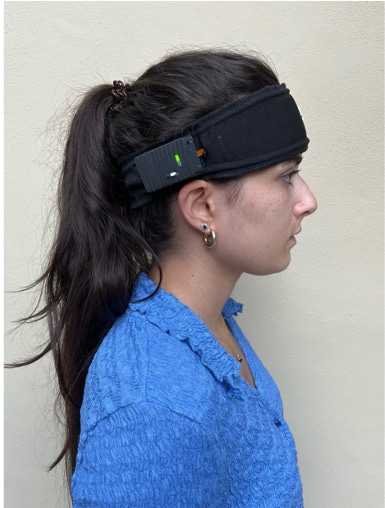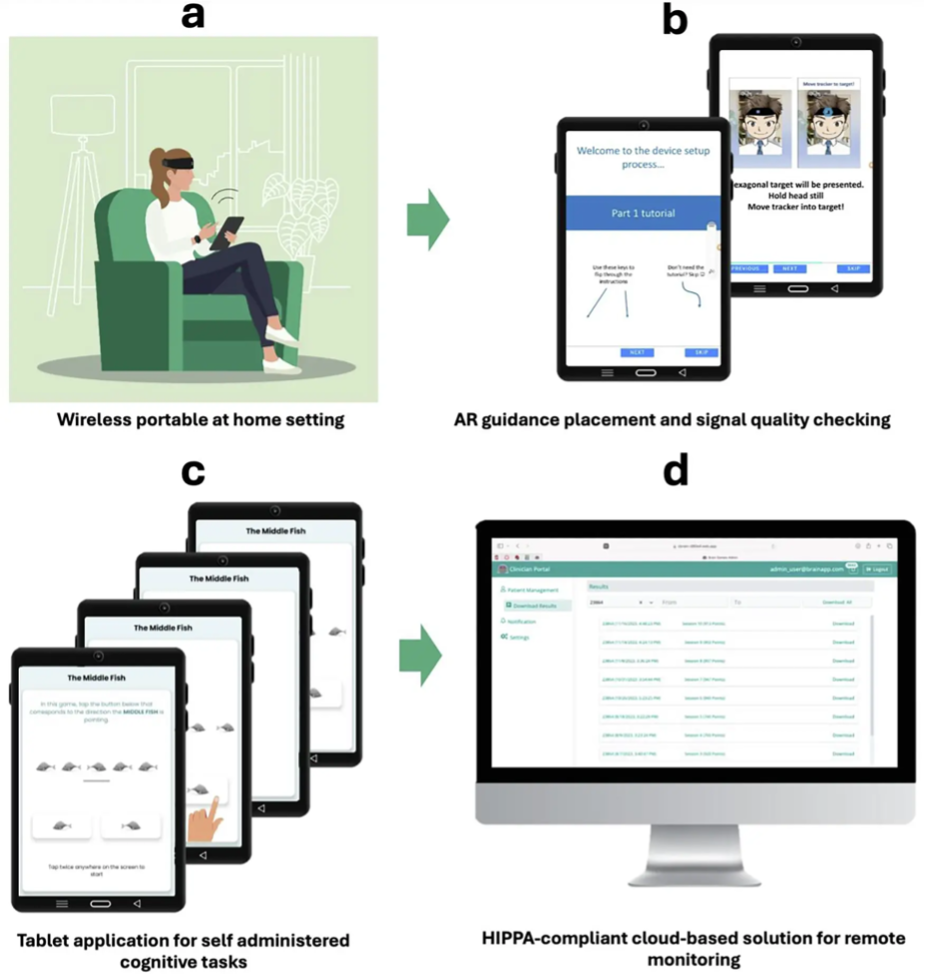Mapping the Mind at Home: A Wearable fNIRS Platform for the Future of Precision Mental Health
Published in Bioengineering & Biotechnology, Neuroscience, and Computational Sciences

Published in npj Digital Medicine
Read the full article →
Why we did this research
One in three people worldwide will experience a mental health condition during their lifetime, yet most won’t receive effective care. This is partly because today’s psychiatric diagnoses still rely heavily on interviews, checklists, and patient self-reports. These tools are subjective, imprecise, and often miss the biological roots of a person’s condition.
That’s where the idea of precision mental health comes in — the goal is to tailor diagnosis and treatment based on a person’s unique brain function, not just symptoms. But we face a major hurdle: most brain imaging technologies, like MRI, are expensive, time-consuming, and available only in hospitals or labs. They’re not scalable. They’re not naturalistic. And they’re definitely not accessible to the people who need them most.
Even when available, these technologies typically provide only a brief snapshot of brain activity — not enough to capture how an individual’s brain functions over time. To enable truly personalized care, we need tools that support dense, repeated sampling in real-world settings, making it possible to track brain patterns with high individual reproducibility.
So we asked ourselves: What if you could map brain function with lab-grade precision — from your own home, without a technician?
What we built
We developed a wearable, wireless brain imaging system based on a technique called functional near-infrared spectroscopy (fNIRS). This technique uses safe, low-intensity light to measure changes in blood oxygen in the brain — a proxy for brain activity. Our system includes:
-
A multi-channel headband covering key areas of the prefrontal cortex — involved in attention, memory, and emotion.
-
A tablet app with cognitive tasks (e.g., memory and attention games) that participants complete while wearing the device.
-
Augmented Reality (AR) guidance to help users place the device correctly, without supervision.
-
A cloud-based platform where researchers or clinicians can remotely access the data in real time.


How we tested it
In our study, eight healthy adults wore the fNIRS device at home or in their offices. Each person completed ten sessions of brain recordings while performing a series of simple computer-based exercises designed to engage memory, attention, and self-control. The full test battery took about 28 minutes to complete during each session, which was entirely self-administered.
That’s over 280 minutes of brain data per participant — far more than a typical lab visit.
We then analyzed the brain connectivity patterns and how reliable they were over time. We also looked at how consistent each person’s brain activity was from session to session, and how it compared to the group average.
What we found
1. Reliability increases with dense sampling.
With just one 7-minute session, the brain data was relatively noisy. But with more sessions, the reliability jumped sharply — up to 0.92, a level rarely seen in psychiatric neuroimaging studies.
2. Each person has a unique brain “fingerprint.”
Functional connectivity patterns (how different regions of the brain talk to each other) were much more similar within the same person than between different people — even when doing the same task. That means our system can reliably capture individualized neural profiles.
3. Group averages hide individual differences.
We compared individual activation maps to the group average and found over 65% of meaningful signals were missed when averaging across people. This highlights the limitations of one-size-fits-all brain research — and the power of personalized approaches.
Why it matters
This study is more than a technology demo — it’s a proof-of-concept for personalized, scalable brain health assessment. Here’s why that matters:
-
Toward objective mental health diagnostics: We need reliable biological markers — not just symptoms — to detect and track mental illnesses. This system helps pave that path.
-
Home-based neuroimaging is now real. People can monitor their brain function in their daily environment, making mental health care more accessible and representative.
-
Lower cost, higher reach. Unlike MRI, our platform is affordable and doesn’t need special infrastructure — which is crucial for remote or underserved communities.
-
New possibilities for research and treatment. Clinicians and researchers can now run longitudinal, dense-sampling studies in the wild, enabling better drug trials and therapy monitoring.
What’s next
We’re now expanding this research in several exciting directions:
-
Applying this platform in clinical populations, including ADHD.
-
Integrating with other wearable devices (e.g., smartwatches) for richer physiological insights.
-
Using machine learning to detect patterns that could predict treatment response or mental health decline.
-
Launching large-scale population studies to map cognitive and emotional brain profiles across diverse communities.
Final thoughts
This work represents a shift from snapshot-based brain research to longitudinal, individualized, and ecologically valid neuroimaging. Instead of bringing patients to the scanner, we bring the scanner to the patient.
By capturing brain function where life actually happens — at home, at work, in real time — we move closer to truly personalized mental healthcare.
Authors
Ali Rahimpour Jounghani, Anupam Kumar, Laura Moreno Carbonell, Ester Patrize Lopez Aguilar, Tulla Bee Picardi, Seth Crawford, Audrey K. Bowden, S. M. Hadi Hosseini
Read the full paper:
https://doi.org/10.1038/s41746-025-01690-3
Follow the Topic
-
npj Digital Medicine

An online open-access journal dedicated to publishing research in all aspects of digital medicine, including the clinical application and implementation of digital and mobile technologies, virtual healthcare, and novel applications of artificial intelligence and informatics.
Related Collections
With Collections, you can get published faster and increase your visibility.
Artificial Intelligence in Emergency and Critical Care Medicine
Publishing Model: Open Access
Deadline: Jan 10, 2026
Evaluating the Real-World Clinical Performance of AI
Publishing Model: Open Access
Deadline: Jun 03, 2026





Please sign in or register for FREE
If you are a registered user on Research Communities by Springer Nature, please sign in